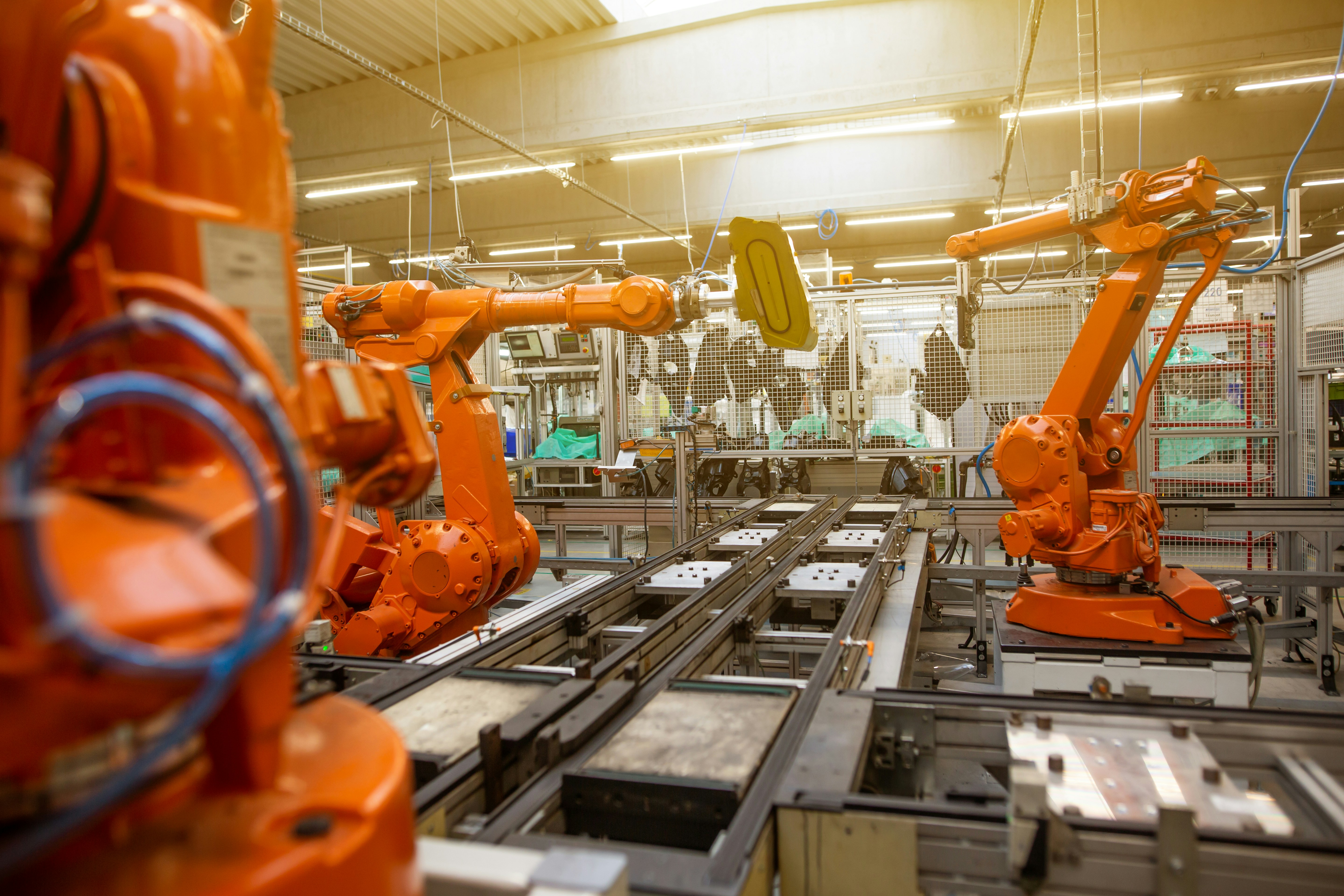
Top UK Robotics Labs and Institutes: Where Automation Is Changing the World
From autonomous vehicles and surgical robots to warehouse automation and agricultural drones, robotics represents a transformative force across countless industries. As cutting-edge hardware meets advanced AI, the UK’s robotics sector stands at the forefront of global innovation—spurring faster, smarter, and safer operations on everything from factory floors to operating theatres.
For professionals or aspiring technologists keen to work in this dynamic field, the UK boasts an array of world-class robotics labs and institutes. They push boundaries in collaborative robotics, machine learning, human–robot interaction, and beyond. In this detailed guide for RoboticsJobs.co.uk, we’ll spotlight the leading robotics research hubs, explore the most exciting areas of R&D, and outline the career pathways available to those looking to shape our automated future.
1. Why the UK Leads in Robotics
1.1 Strong Academic Foundations
The UK’s robust university system underpins its thriving robotics scene. Institutions like Imperial College London, University of Oxford, University of Cambridge, and University of Edinburgh produce global talent in computer science, mechanical engineering, and AI—fueling breakthroughs in intelligent machines.
1.2 Government and Industry Support
Industrial Strategy Challenge Fund: Through this and other mechanisms, the UK government invests in robotics for manufacturing, healthcare, agritech, and logistics.
Innovate UK: Facilitates collaborations between academia and businesses, accelerating the translation of new robot prototypes into commercial products.
Catapult Centres: Technology-focused hubs—like the High Value Manufacturing Catapult—offer shared facilities and industry co-creation spaces dedicated to automation solutions.
1.3 Diverse Applications and Start-up Scene
Outside automotive assembly lines, UK-based robotics excels in fields like precision agriculture, surgical robotics, drone technologies, and service robotics. A vibrant start-up culture—especially around London, Bristol, Cambridge, and Manchester—creates ample opportunities for robotics professionals to bring fresh concepts to market.
2. The Bristol Robotics Laboratory (BRL)
2.1 Europe’s Largest Robotics Research Centre
A partnership between the University of Bristol and the University of the West of England, the Bristol Robotics Laboratory (BRL) is a renowned hub for cutting-edge robotics research. Encompassing over 300 academics, researchers, and industry partners, BRL tackles everything from soft robotics and swarm intelligence to human–robot interaction and driverless cars.
2.2 Key Research Themes
Soft Robotics: Drawing inspiration from biological organisms to create robots with flexible actuators and tactile sensing.
Swarm Robotics: Investigating how large groups of robots can cooperate on complex tasks, relevant for search-and-rescue missions or agricultural operations.
Assistive Living and Healthcare: Developing companion robots, prosthetics, and exoskeletons that enhance patient care, rehabilitation, and independence.
Human–Robot Interaction (HRI): Ensuring robots are socially and cognitively compatible with humans in domestic or collaborative industrial settings.
2.3 Collaboration and Career Prospects
Industry Partnerships: BRL works closely with companies like Dyson, Airbus, and Toshiba, providing a pipeline for internships, collaborative PhDs, and spin-out ventures.
Start-up Support: The West of England region fosters a strong robotics start-up culture; local incubators help commercialise lab discoveries.
Academic Roles: Master’s, PhD, and postdoctoral positions are plentiful, covering a broad spectrum of robotics subfields.
If you see yourself designing the next generation of soft or swarm robots, Bristol Robotics Laboratory offers a multidisciplinary environment that marries science, engineering, and user-centric design.
3. University of Oxford – Oxford Robotics Institute
3.1 Visionary Autonomy and AI
Already renowned in AI and machine learning, Oxford extends that expertise to robotics through the Oxford Robotics Institute (ORI). Researchers here target autonomous systems for land, sea, and air vehicles, with a strong emphasis on real-world deployment.
3.2 Research Highlights
Mobile Robotics: Working on advanced perception, mapping, and navigation solutions for self-driving cars and unmanned ground vehicles.
Legged Robots: Designing agile robotic platforms capable of navigating complex terrain—potentially invaluable for disaster response or planetary exploration.
Human–Robot Collaboration: Studying how robots and humans can safely and effectively work side by side in dynamic environments like warehouses or surgical suites.
Machine Learning Integration: Developing algorithms that allow robots to adapt in real time, learning new tasks or coping with uncertain conditions.
3.3 Academic and Industry Synergy
Joint Ventures: Regular partnerships with vehicle manufacturers (e.g. Jaguar Land Rover) and big tech (e.g. Amazon Robotics).
Spin-Outs: Companies like Oxbotica (autonomous driving software) illustrate how ORI research translates into commercial success.
Research Positions: DPhil (PhD) roles, postdocs, and research fellows often balance fundamental methods (like SLAM or reinforcement learning) with system integration.
For those keen on autonomous vehicles, advanced robotics, and a rigorous academic approach, Oxford offers an internationally respected platform to drive forward the future of automated mobility.
4. Imperial College London – Robotics and AI
4.1 Engineering Leadership
Known for its powerful engineering faculties, Imperial College London is home to robotics research that blends mechanical, electrical, and computing disciplines. Its labs focus on robot perception, manipulation, and real-world AI integration.
4.2 Main Research Areas
Surgical Robotics: Imperial researchers pioneer minimal-access surgical devices, including flexible endoscopes and robotic arms guided by AI for precision tasks.
Manipulation and Grasping: From delicate tasks like fruit picking to heavy-lifting manipulators for construction, the robotics groups refine mechanical grippers and advanced sensors.
Multi-Robot Systems: Investigating how fleets of robots can coordinate tasks in agriculture, inspection, or warehouse automation.
AI-Driven Control: Embedding deep learning into real-time control loops for adaptive robotics across varying conditions.
4.3 Translational Ecosystem
Imperial Robotics Forum: Unites researchers across departments (bioengineering, aeronautics, computing) to drive collaborative projects and user-centred designs.
Industry Partnerships: Strong ties with medtech companies, automotive OEMs, and retail logistics players looking to automate supply chains.
Enterprise Support: Imperial’s Enterprise Lab nurtures spin-outs and start-ups commercialising specialized robotic arms, new sensor technologies, or cutting-edge AI modules.
With a hands-on engineering ethos and a global reputation, Imperial provides an environment where you can transform conceptual designs into robust prototypes ready for commercial adoption.
5. University of Edinburgh – Robotics and Autonomous Systems
5.1 Pioneering Informatics and AI
The School of Informatics at the University of Edinburgh consistently ranks among Europe’s best for computer science, catalysing robotics advancements that integrate machine learning, computer vision, and cognitive modelling.
5.2 Distinctive Research Focus
Humanoid Robots: Research includes bipedal locomotion, gesture-based communication, and advanced sensor fusion, moving closer to robots that function in human-centric spaces.
Field Robotics: Mapping and exploration in agriculture, forestry, or offshore environments, with emphasis on robust autonomy in harsh conditions.
Social Robotics: Delving into emotional AI, user engagement, and anthropomorphic design to develop robots that can converse or assist with daily life tasks.
Reinforcement Learning: Training robots to learn tasks via trial and error, from manipulative tasks to navigation in dynamic environments.
5.3 Start-up Culture and Scottish Innovation
Edinburgh Centre for Robotics: A joint venture with Heriot-Watt University. It provides comprehensive training programmes, emphasising academic–industry synergy.
Bayes Centre: Encourages data-driven innovation, often bridging AI research with robot-centric projects.
Tech Ecosystem: Edinburgh’s lively start-up scene and supportive government schemes bolster spin-out opportunities in areas like service robotics and warehousing solutions.
If you’re fascinated by AI-driven robotics and want to explore advanced autonomy in a city balancing historic charm with high-tech energy, Edinburgh offers an inspiring backdrop.
6. The Robotics Innovation Centre at Heriot-Watt University
6.1 Internationally Recognised for AI and HRI
Heriot-Watt University, often working in tandem with Edinburgh, has carved a niche in human–robot interaction (HRI) and field robotics. Labs here address real-world challenges such as maritime exploration and collaborative manufacturing.
6.2 R&D Highlights
MARBLE Project: Maritime robotics focusing on underwater inspection, resource mapping, and environmental monitoring.
Collaborative Manufacturing: Examining how robots can assist production lines, especially in small- to medium-sized enterprises where flexibility is key.
Healthcare and Hospitality Robotics: Partnerships with local care homes to pilot companion robots or automated service solutions in the tourism industry.
6.3 Career and Research Opportunities
Academic Positions: PhDs, postdocs, or research associate roles often integrate AI, mechanical design, and real-time systems.
Industry-Led Projects: Collaborations with big maritime or energy firms, e.g., subsea engineering companies seeking autonomous solutions.
Spin-Out Pathways: Heriot-Watt fosters entrepreneurship, bridging start-ups with venture capital and global supply chains.
For those drawn to robust, real-world applications—like deep-sea robotics or collaborative drones—Heriot-Watt’s focus offers immersive, interdisciplinary projects that can jumpstart your career.
7. University of Manchester – Advanced Robotics and Mechatronics
7.1 Industrial Automation Roots
Manchester’s computing heritage meets strong engineering programmes to spur robotic solutions for factories of the future, bridging mechanical, electronic, and software disciplines.
7.2 Core Projects
Manufacturing Robotics: Teaming with the Advanced Manufacturing Research Centre (AMRC) and local companies to automate processes in aerospace, automotive, and consumer goods.
Healthcare Robotics: Research into micro-robotic surgery tools or wearable exoskeletons for rehabilitation.
Agricultural Drones and Ground Vehicles: Optimising robotics for farm management, weed control, and yield monitoring, boosting the UK’s agri-tech capacity.
7.3 Ecosystem and Job Pathways
Industry Collaborations: Partnerships with global OEMs (like Siemens or ABB) to test next-gen robotics in real industrial workflows.
Local Tech Scene: Manchester’s Northern Powerhouse initiatives attract investment into advanced engineering and robotics start-ups.
Academic Roles: Masters and PhDs in mechatronics or manufacturing automation emphasise direct ties to factory-based pilot programmes.
Manchester’s synergy of historical computing achievements and advanced engineering ensures a strong pipeline for those passionate about turning factories, farms, and hospitals into automated marvels.
8. National Centres and Testbeds
8.1 The UK Robotics and Autonomous Systems (UK-RAS) Network
Funded in part by the Engineering and Physical Sciences Research Council (EPSRC), UK-RAS connects academic institutions, industry labs, and policy-makers. It coordinates events like UK Robotics Week and fosters collaboration across diverse robotics verticals—healthcare, defence, and more.
8.2 Catapult Centres
High Value Manufacturing (HVM) Catapult: Focuses on robotics for advanced manufacturing, bringing a cross-section of labs under one umbrella.
Offshore Renewable Energy (ORE) Catapult: Investigates maintenance robots for wind turbines or tidal energy systems, often working in extreme maritime environments.
8.3 Government Initiatives
Innovate UK Competitions: Offer grants and match funding for collaborative R&D that can include robotics hardware, software, or integrated systems.
Industrial Strategy Challenge Fund: Encourages adopting robotics in new sectors, from nuclear decommissioning to infrastructure inspection.
Careers here range from policy engagement and technical project management to direct R&D on large-scale robotics testbeds, perfect for those who enjoy orchestrating multi-stakeholder projects.
9. Key Skills for Robotics Professionals
9.1 Programming and Software
C++ and Python remain essential in robotics, from sensor drivers to high-level AI logic.
ROS (Robot Operating System): The de facto standard for robot middleware, providing packages for navigation, perception, and control.
OpenCV: Computer vision libraries enabling real-time object detection, tracking, and 3D reconstruction.
9.2 Mechanical and Electrical Engineering
CAD/CAE: Proficiency in SolidWorks, Autodesk, or Ansys for designing and simulating mechanical components.
Embedded Systems: Working with microcontrollers (Arduino, STM32) and single-board computers (Raspberry Pi, NVIDIA Jetson).
Control Theory: Understanding PID, state estimation, and advanced control systems to ensure stable and efficient robot operation.
9.3 AI and Machine Learning
Deep Learning: For tasks like image segmentation, speech recognition, or reinforcement learning-based control.
Sensor Fusion: Combining data from LiDAR, radar, IMUs, and cameras for robust perception and localisation.
Planning and Decision-Making: Graph-based planning (A*, RRT), Markov decision processes, or advanced scheduling algorithms.
9.4 Soft Skills
Collaboration: Robotics teams are highly cross-disciplinary. You’ll coordinate mechanical engineers, software devs, AI researchers, and domain experts.
Communication: Explaining complex robotic systems to stakeholders (investors, clinicians, or factory managers) is crucial for project buy-in and user adoption.
Problem-Solving Mindset: Field testing or hardware integration issues demand creative thinking under time constraints.
10. Career Pathways in Robotics
10.1 Academic Research
PhD: A gateway to expertise in advanced robotics or AI, often culminating in peer-reviewed publications and collaborations.
Postdoctoral Fellowships: Fuel deeper specialisations in humanoid locomotion, surgical robotics, or multi-robot systems.
Academic Tenure: Leading a robotics lab, securing grants, and educating the next wave of roboticists.
10.2 Industry Roles
Robotics Engineer: Designing, building, testing, and refining robot hardware (actuators, sensors, microcontrollers) and software (control loops, autonomy stacks).
Computer Vision/ML Engineer: Integrating advanced perception and decision-making modules into robots, leveraging deep learning.
Field Deployment Specialist: Installing and maintaining robots in real environments—factories, warehouses, or service contexts—ensuring reliability under shifting conditions.
Product Manager: Liaising between engineering, business, and customers to define product roadmaps, handle resource allocation, and manage product lifecycles.
10.3 Start-up and Entrepreneurship
Founder / CTO: You might conceive novel robotics solutions for agriculture, healthcare, or e-commerce, then build and grow a team around that vision.
Consulting: Advising companies wanting to embrace automation, helping them select the right platforms, plan rollouts, and manage ROI.
Whether you’re tackling the complexity of swarm coordination or perfecting a single collaborative arm for factories, the UK robotics sector offers a wealth of specialisations, each with unique challenges and rewards.
11. Networking, Events, and Professional Bodies
11.1 Conferences and Workshops
ICRA (International Conference on Robotics and Automation) and IROS: Though international, these events feature strong UK participation, unveiling cutting-edge robotics research.
UK Robotics Week: Hosted by UK-RAS, fosters open labs, hackathons, and outreach to highlight UK-based projects.
Robotics and Automation (RA) Exhibitions: Annual expos in Birmingham or London, bridging robotics vendors, academics, and industry buyers.
11.2 Professional Associations
The Institution of Engineering and Technology (IET): Hosts robotics-themed talks and conferences, also providing chartered engineer recognition.
BCS (British Computer Society): Although broader, BCS sometimes delves into robotics, especially in synergy with AI or software reliability.
IEEE Robotics and Automation Society (UK Chapter): Coordinates local events and networking for practitioners, especially those who publish in IEEE journals.
11.3 Local Meetups and Incubators
Cities like London, Bristol, and Manchester feature robotics clubs and makerspaces to share prototypes, hold coding sessions, and welcome hobbyists transitioning into professional roles.
Conclusion
The UK’s diverse, fast-growing robotics sector stands at the intersection of mechanical design, AI, sensor fusion, and human–robot collaboration. With world-class labs at Bristol Robotics Laboratory, Oxford Robotics Institute, Imperial College London, Edinburgh, Heriot-Watt, Manchester, and more, there are ample routes to build a fulfilling robotics career—whether you aim for academic research, industrial R&D, or entrepreneurial ventures.
As automation expands across healthcare, logistics, manufacturing, and daily life, demand for skilled roboticists will only intensify. By mastering the relevant technical and soft skills—and engaging with the vibrant network of UK robotics hubs, Catapult centres, and start-ups—you can position yourself at the cutting edge of the automated revolution.
Ready to explore open positions or collaborate with leading employers? Visit RoboticsJobs.co.uk to discover the latest listings, gather industry insights, and connect with fellow innovators. The next wave of robotics innovation awaits—be part of the teams bringing robots to life and shaping how the world works, learns, and thrives in an increasingly automated era.


